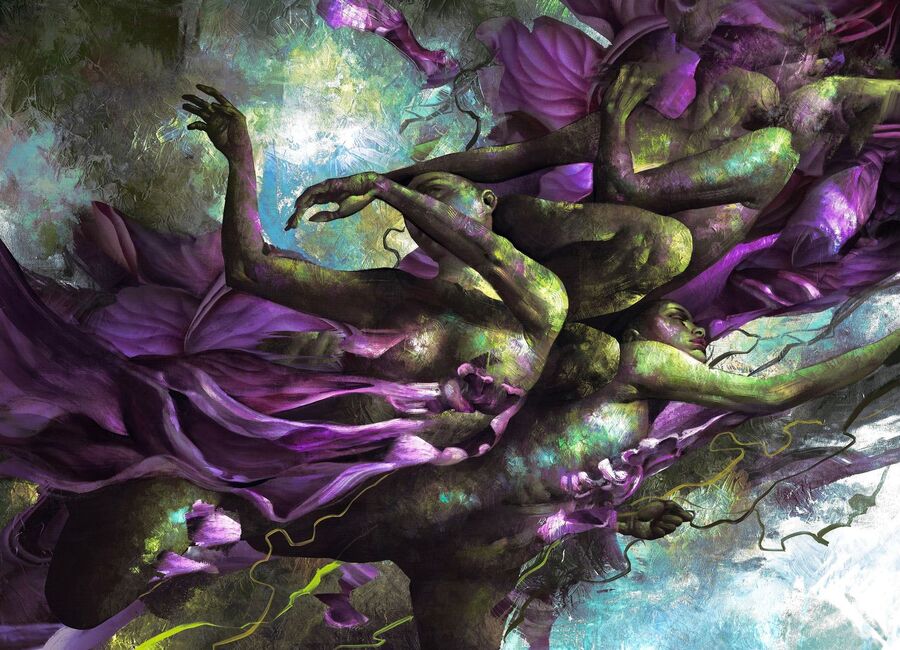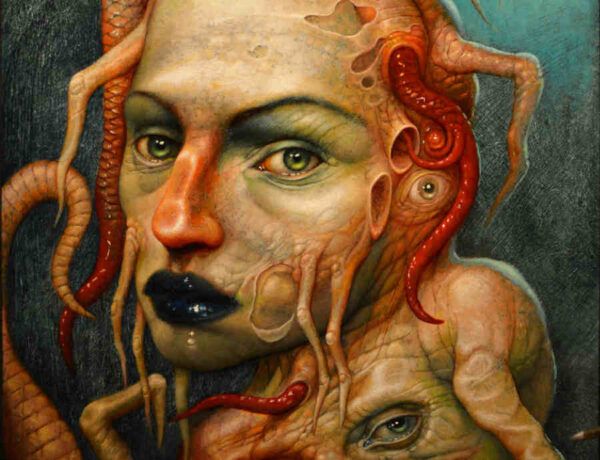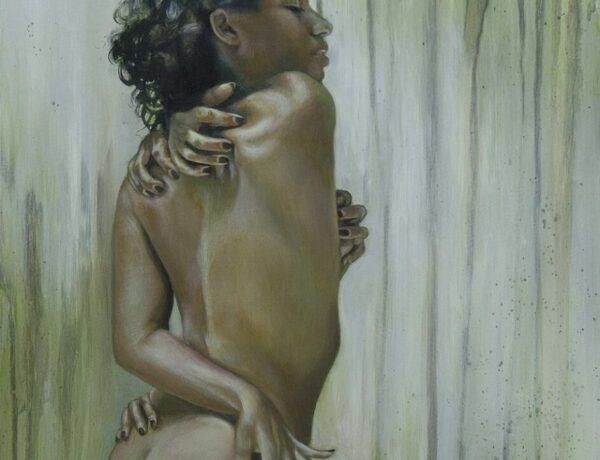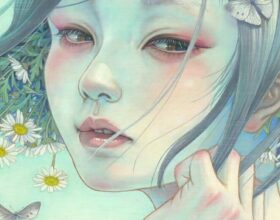Exclusive Interview With Juliet Nneka, 3rd Prize Winner of the iCanvas Digital Art Award, 2022 Beautiful Bizarre Art Prize
The overlap of blackness, art and nature is one that is explored in Juliet Nneka’s world. The artist uses digital mediums to create highly dramatic portraits of women who look like her, set in places that only seem to exist in another world. The Netherlands-based artist of Nigerian descent offers a refreshing approach to portraiture where women seem to be one with the fictional world they inhabit.
Portraiture or self-portraiture are one of the oldest forms of art expression. It stems from a desire for humans to see themselves or others in more detailed or particular ways. Whether it is through the depth of a gaze, the curve of a nose or the fullness of a lip. Indeed, humans seek to render physical characteristics through materials in an attempt to transcend flesh and blood.

3rd Prize Winner
iCanvas Digital Art Award Beautiful Bizarre Art Prize 2022
Medium & Dimensions:
Digital Painting & Drawing (Procreate and iPad Air)
Indeed, Juliet Nneka brings a certain refinement to digital art. A sort of unique tapestry of colors and movement that sublimes realism by making it into something more profound. There is depth in the gaze of the women she creates. There is harmony between flora and femmes, stuck in a perpetual dance. An aesthetic feast, a ritual of some sort. Whether Juliet Nneka, chooses to be literal or phantasmagorical, there is still an undeniable charm about the way she chooses to depict the world.
Thanks to the artist, black femmes can be seen and perceived as dramatic heroines which existence can be romanticized and their beauty, revered. A necessary homage to women that navigate a world that isn’t always welcoming of them and whose beauty goes still largely unnoticed.
The artist was featured in Beautiful Bizarre Magazine’s 14th curated exhibition, Halcyon Days, last November. And she gracefully accepted to answer our questions.
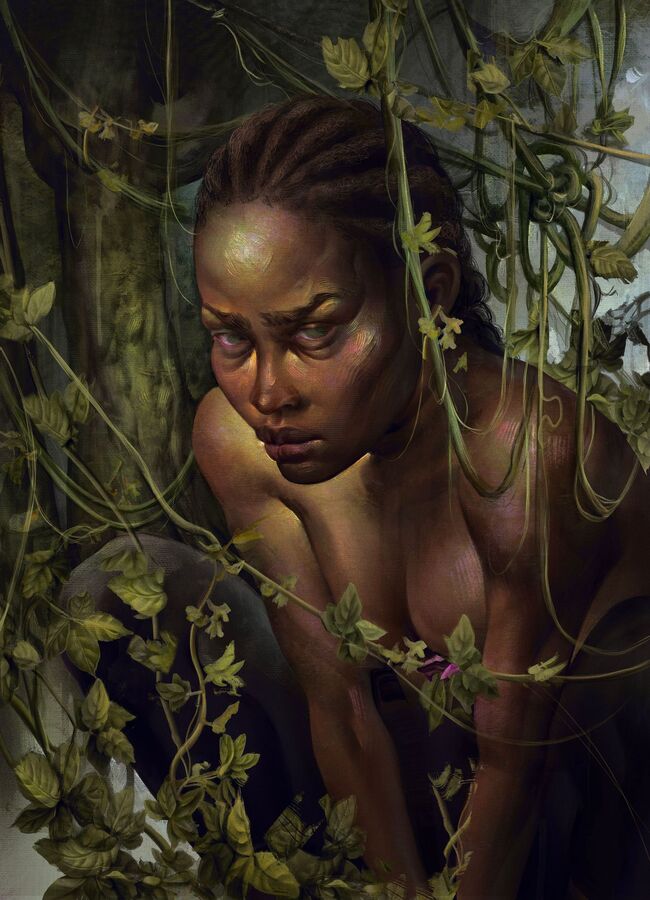

We can create our own unique visual language by observing reality!
When did Juliet Nneka’s love for sketching first emerge? Is it a lifelong passion or something you found out about yourself later in life?
As a child, I spent evenings in my parents’ gardens, shifting through leaves and taking the flowers apart. Hibiscus pistils and stamens had a cryptic, alien disposition when observed together up close. Orchid petals postured like faces. All I did was try to understand the beauty I found in the gardens – to capture them on paper so that I could live in those moments forever. Sketching was a love of mine that blossomed quite naturally from childhood.
How important is realism to Juliet Nneka as an artist?
Very. Realism is the resting place where we find a bearing to grab onto; we warp, shape, and deconstruct our inputs, creating our own narratives through a personalized visual language. Nothing in art is without meaning, and meaning is based on personal semantics. The orchids I replicated with graphite as a child find their way into my work today, but through a love of organic floral surrealisms: free flowing, twisted stems. Pinks and purples and iridescent greens. We can create our own unique visual language by observing reality!
Your artworks two years ago had a slightly different color palette than your most recent works (warmer tones, a strong presence of green with blue undertones in 2020 versus tamer tones and pink-ish nuances in 2022). What inspires you to experiment this way?
On pink, I really think I was just afraid of being too feminine. I stopped caring somewhere down the line, and it became one of my favourite colours to use in paintings – just after green. I think my colour palette mellowed out because I realised what colours I really enjoyed, and it all just became a little more curated. My style just matured, and will continue to evolve as my psychology changes over the years.
I learned about Hollywood and eurocentric beauty standards at some point – even tried to portray them. But they felt less like home, so I just made blackness my own staple.
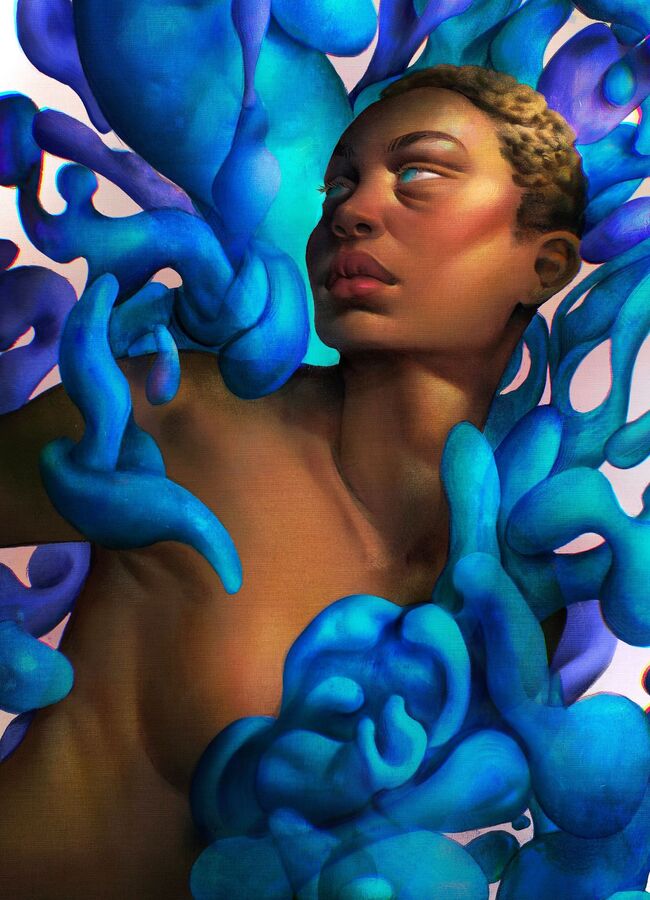
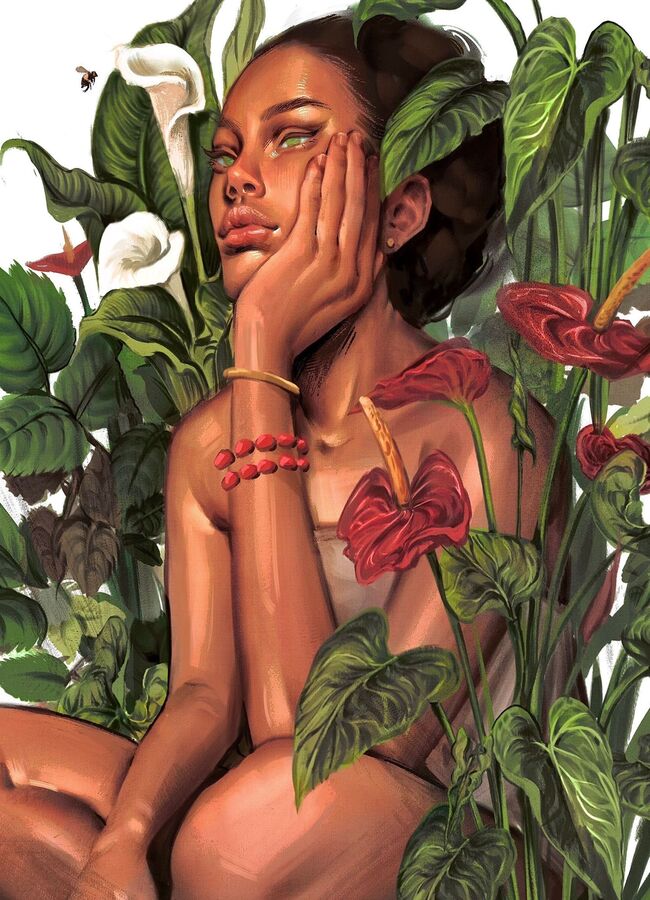
The women you, Juliet Nneka, draw have eyes that look almost unreal, like small colorful whirlwinds that hold special powers… Is it intentional?
Not really, but mystique is a trait I quite enjoy. I love to transport people to a different time and place. I love things – and people – that seem alien and cryptic. It’s not intentional that you end up picking that up through the gaze, but the idea of the exploration of a surreal presence is something that I have always been taken with.
You seem to make it a point to draw black woman in dreamlike setting… does it stem from a desire for you to generate representation for black beauty in art?
I grew up in Lagos, Nigeria. Everyone around me was black. Like with realism, this is the reference point that shaped my own narrative. Of course, I learned about Hollywood and eurocentric beauty standards at some point – even tried to portray them. But they felt less like home, so I just made blackness my own staple. Because of the history of the west, there’s this subconscious misconception that it is an act of protest to just exist as a black woman. I fight for my people in other ways, but in my art I’m just being who I am. I am happy that it inspires others.
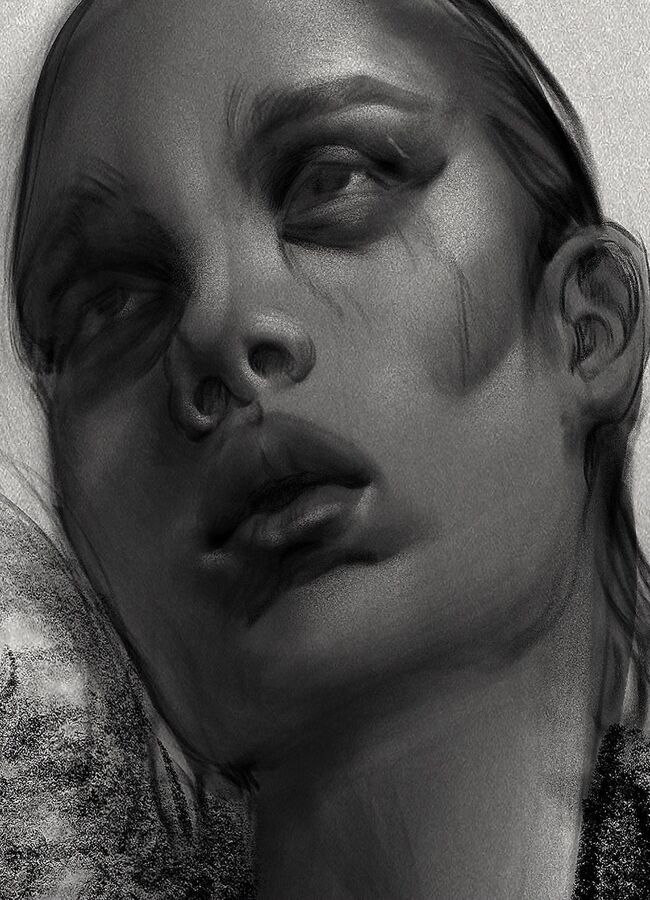
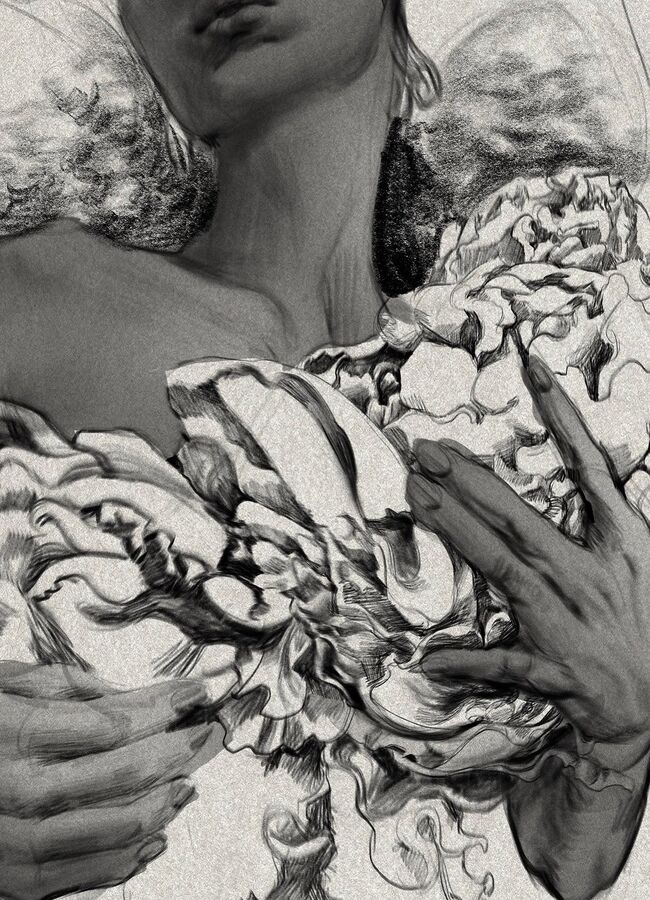
Digital art can be a misunderstood art form at times, have you ever encountered people who didn’t take your art seriously?
I was trained on traditional mediums through high school, and I do have a great deal of admiration for the traditional arts. But I think that the one gripe people have with digital art today is that it is inherently less ‘human’, because we create and interact with it primarily through the existence of a technosphere.
I do get the occasional comment about how my work is easier because it’s made on a screen, but they generally don’t bother me, and I don’t think that is true. Because although an infallible technique can be fascinating, it’s no longer about the ‘ease’ of creating art. It’s more about the question that many people are afraid to ask: who are you as an artist, and where are you going?
Through my mind’s eye, there exists a character that is a constantly wavering, dichotomous force. Always inquiring, and conjured up out of greens and purples.
Do you think digital art is on its way to becoming an elevated art form in the art world?
Yes. We are finding ways to create new, immersive experiences, different from the traditional space where a 2D piece is mounted on a wall. On a global scale, we already consume artwork through the digital domain all the time, and it is one of the most flexible mediums for storytelling.
There are people underground creating incredible work, and spaces for new media are emerging every year. It isn’t enough to say that cryptographic artifacts are becoming indistinguishable from their traditional counterparts in the contemporary art space. They will become the contemporary art space. Every traditional work has a digital counterpart in some form… of course, unless the point of the work is to be digitally untraceable. That would be interesting to think about, wouldn’t it?
Does your work as a model influence your art? Would you ever consider mixing the two for a specific project? Or even working with fashion collaborators on a design project?
Through my mind’s eye, there exists a character that is a constantly wavering, dichotomous force. Always inquiring, and conjured up out of greens and purples. But they are not quite me. Or perhaps they would be, if I were not stuck within the matrix of today’s time and place. When I pose for my own painting, this alter-ego is who I try to connect with.
In a way, you could indeed say that a lot of my practice is a collaboration between artist and muse, where they are the same person. As Juliet Nneka the model, it’s hard sometimes to connect to someone else’s world when I’m really still exploring mine. But I think that if I’m able to build the right bridge with the right person, I could rightfully live in the world of another designer.
Can you walk us through your artistic process for a typical piece?
I first gather my references if I need them: personal photographs, dendritic images and sculptural derivatives. Paintings and works by current inspirations, such as James Jean and Iris Van Herpen. A new addition I have been exploring is the use of DALL-E to create botanical abstractions to add to my mood boards, but not necessarily to directly reference.
For the central figures, I pose if necessary. Then I build a composition, which actually involves a lot of initial collaging and a grayscale underpainting if the piece I’m envisioning is complex. But once the sketch is complete, I don’t usually make a lot of changes from then. I just paint, and play with textures, light, and my favourite colours.
Would you ever consider working in animation?
I’ve recently become intrigued with this idea that I can bring a painting to life by making it move through via AI animation – that is one thing that I certainly see myself exploring, especially as more AI tools become available.
Why did you enter the Beautiful Bizarre Magazine Art Prize?
I saw that artists I admired had also been involved with the Beautiful Bizarre Art Prize, at some point, either as finalists, honorable mentions or winners. I also have been following the magazine for some time. My style sort of aligns with the themes, so I decided it couldn’t hurt to apply – I just wanted to get my work in front of new eyes.
What do you feel you have gained from this experience?
I am more confident in the digital medium! And I am grateful for new connections and the opportunity to participate in the gallery exhibition among so many brilliant contemporary artists.
Would you recommend it and encourage others to enter? If so, why?
Yes! Especially digital artists. I was able to discover so many amazing artists through the prize, and it also helps to get people to see your work. The connection created between yourself as an artist and the magazine is valuable.
Juliet Nneka Social Media Accounts
Website | Instagram | Twitter | Foundation


